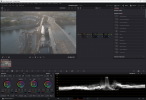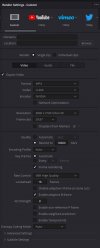First of all, I find it very refreshing to have a lively forum where to discuss topics which are sometimes difficult to get your head around and you can profit from people with more experience.
Yes, in my experience, there is a difference between 10bit (1024^3 = 1 Billion) and 8bit (256^3 = 17 Mio). Color grading in 10 bit was actually fun and yielded great results, every time. My Sony A7 III shoots 8bit video. I spend litterally days to get the color grading process to work. The results have been less than stellar. So a 2.000$ + lenses camera must yield to a 1.800$ drone, when it comes to grading. So yes, 10 bit does mattter.
Unless you prove me wrong. I would love to shoot in 6k, 30fps and Log, if and only if the Log result looks actually better.
I compared the 6k log footage with the standard LUT (3) and one free LUT from a youtuber (2) to the standard picture profile (1):
1. Standard picture:
The standard picture looked good right out of the box. Even though the picture was perfectly illuminated it showed a cut off in the Lumetri Scopes at around 60, with reds topping of the scale. With some basic corrections and curves I managed to push it up to close 90 on the Lumetrie scope. The blues being close to 0. Most notably I took the red curve a notch down. I seems to be a Sony chip/software, which prefers warm colors - a tad too much for my liking.
It was an icy morning, flying over a meadow next to a river. The top of the gras was partially frozen, white. The light blue sky retains it´s natual color, the soft clouds remain their delicate texture.
It looks good, if not to say great.
2. Correction LUT ( a freebe by a guy named OriginaldoBo)
The profile is even flatter than the original LUT. But it retains the colors pretty well and I could grade it to a pleasing result. The frozen gras was nicely displayed, and the greens were also nice. The sky had retained it´s natural color. But I noticed some banding in the sky. The soft clouds would not remain it´s fine texture. The color starts to fall apart.
3. Standard LUT
The worst, I must confess. Not only were the colors off, which I managed to recover, but the sky had a slight hint at purple and the banding was horrible. As the color bleeding is too obvious, I would render this picture useless.
I do not present on youtube. I hold myself to a much higher standard, at least I hope so.
I would love to squeeze some more DR out of this camera. But as it stands for now, the camera is maxed out at 6k Standard color, being the best picture or I am just not there yet. Help appreciated








